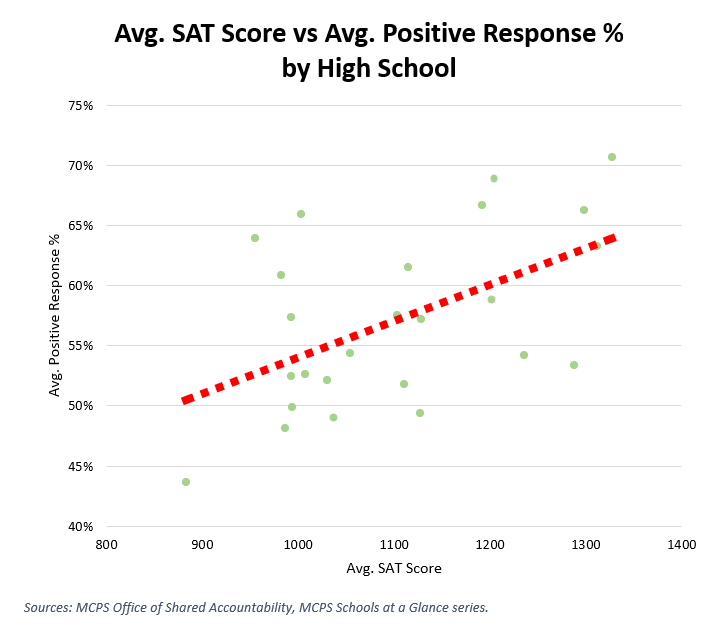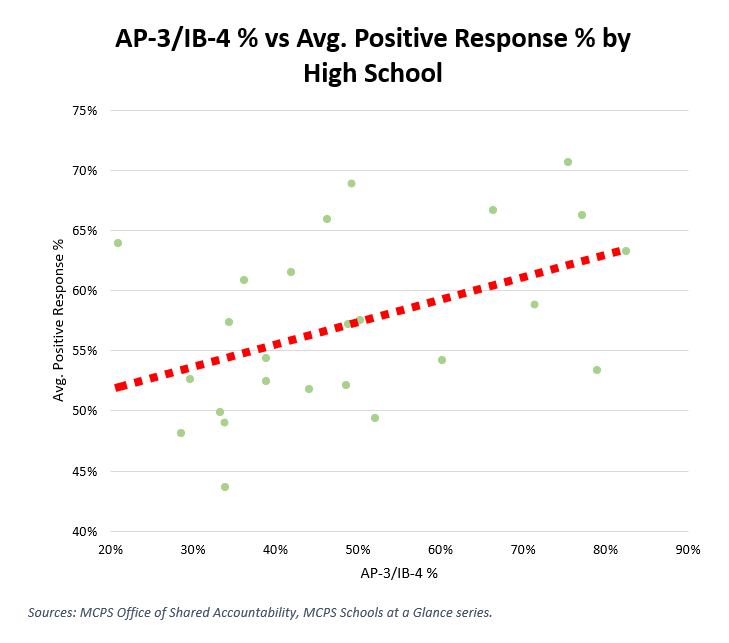By Adam Pagnucco.
Here is an interesting wrinkle that showed up in the data. Is a positive employee climate associated with student achievement?
There might be reason to believe so.
MCPS’s Schools at a Glance series contains a few measures of student achievement in high schools. Two of them are average SAT score and the percentage of graduates scoring 3 or higher on AP tests or 4 or higher on IB tests. I created scatter charts and calculated correlation coefficients between these variables and average positive responses by high schools.
Below is a scatter chart showing average SAT score on the horizontal axis and average positive response on the vertical axis.

See how the slope of best fit rises? There is a positive correlation between these variables. The correlation coefficient is 0.53, indicating a modest positive correlation.
Below is a scatter chart showing AP-3/IB-4 percentage on the horizontal axis and the average positive response on the vertical axis.

Again, the slope of best fit rises. The correlation coefficient is 0.45, again indicating a modest positive correlation.
Now for the caveats. Correlation coefficients are quick and dirty analytical tools. They are incomplete because they don’t account for other factors that might be influencing the analyzed variables. Crucially, they don’t indicate causation. If these variables are indeed positively related, which one is causing the other? Alternatively, is something else – or maybe multiple something elses – driving both of them?
Another caveat. I also ran correlation coefficients for average positive response and two other achievement measures – graduation rate and percent of students meeting University System of Maryland entrance requirements. Those correlation coefficients were 0.20 and 0.34, indicating weaker positive relationships. In fact, in the presence of other independent variables, the relationship between survey responses and these factors could ultimately not be statistically significant.
And so this evidence, incomplete as it is, merely suggests a relationship between student achievement and employee satisfaction without demonstrating the direction of causation. However, it’s interesting enough to warrant further analysis. MCPS should do a multiple regression with a host of independent variables to isolate the impact (if any) of employee climate on student performance. And they should do it on other school types, especially elementary schools, which have the largest sample. If they can establish a link and gather data on how any such link operates in practice, it might help them both recruit and retain employees and enhance student achievement at the same time.
That’s it for now. MCPS deserves credit for collecting and releasing this data. Hopefully they can do further work on it and accumulate a longitudinal data series in the future.
